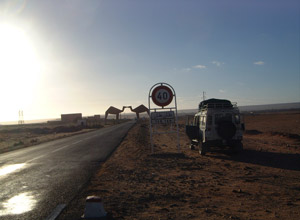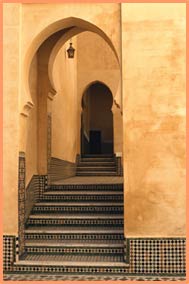History |
Cristel |
Southern
Sus
according
to Leo
| On
the road to Timbuktu Leo's understanding and appreciation of any village, town or region in Morocco was greatly defined by his purpose in raveling there. If he traveled for diplomatic reasons, he noted the ways of power and justice ; if he traveled on a military assignment, he noted the relative strength and aptitude for war of the locals. And if he traveled for commerce, he noted the nature and price of the goods he encountered. Leo traveled through theses Southern Sus lands on his way to Timbuktu, or on other commercial missions. As a consequence, he paid careful attention to all those involved in the great trade routes between the Mediterranean and the Sudan, or "the black country" as it was known then. |
 Entrance to Tan-Tan, on the road to Mauritania |
| "There
are many small shops in the center of town. The population is made
up of three groups who constantly quarrel. In turn, they ask the
Arabs for help to fight the others, and the Arabs give assistance
to whichever group pays them most. The surrounding lands are very fertile, and cattle abounds. Wool is cheap, and made into small samples that commercial agents bring to Timbuktu and the black country once a year. The people dress quite well. The women are beautiful and graceful. Many men are brown, for they were born of mixed parents- black and white. There is no real government, other than the rule of the strongest. I spent 13 days in this town with one of the Cherif's (Saadian prince who united the independent tribes around Marrakech and later became one of the first rulers of the Saadian dynasty) ministers to buy slaves for the prince, in 919 (1513)." (94) |
